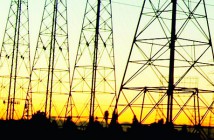Climate change and population growth are the two key factors that are driving rapid change in the Australian urban water industry
Over the last 10 to 15 years rainfall patterns over the catchments that provide urban Australia with their water resources have proven to be more unpredictable and fickle that has historically been the case. Surface runoff from catchments into dams is very sensitive not only to the amount of rain but also rainfall patterns. For instance, in Perth rainfall volumes have dropped by 25 percent over the last decade yet inflows into dams have decreased by well over 60 percent. This is due to the fact that there has been an absence of large rainfall events and follow-up rains have been rare which means that rainfall is always falling on dry soils that need to be saturated before they will shed runoff.
Over the next 45 years, the Australian Bureau of Statistics (ABS) in its most aggressive forecast estimates that Australia could grow its population by more than 21 million people. It is likely that the majority of this population will reside in the capital cities and major urban centres around Australia. It is because of this that population growth will have significant implications for urban water resources.
Up until recently, urban Australia was completely reliant on dams as the main source of water. In a drying climate with highly variable rainfall relying on dams completely represents a high risk option. This is the reason that the urban water industry has been investing significantly in new water sources that are not reliant on rainfall. Desalination plants and recycled water schemes have been two of the key responses to the challenges of climate change and population growth. Overall, water utilities in Australia are endeavouring to create a diversified portfolio of water supply options to manage climate change risks.
The type of water supply sources included in these portfolios will vary from city to city depending on a range of climatic and geographic factors. Sources of water included in these portfolios will include dams, desalination plants, recycled water schemes, groundwater, rainwater tanks, stormwater recycling and rural to urban water trading. The latter will become an increasingly important source of water given that urban Australia consumes less than 20 percent of the total water used in Australia every year.
Significant responses have also been implemented on the demand side. Innovative and progressive water conservation programs are the corner stone of water resource plans for our cities and towns. There have been significant declines in per capita consumption of water across urban Australia over the last decade. Overall, capital city water consumption has reduced by 25 percent since 2003. If water consumption had stayed at the level they were in 2003 an additional 210 gigalitres would have been consumed in 2008. To put the volume of 210 gigalitres into perspective, it is the equivalent of the annual consumption of all households in Melbourne during 2008.
The extent to which urban Australian has embraced a water conservation ethos is one of the great social revolutions to happen in our society.
The factors that have contributed to the significant reduction in per capita consumption of water include a large increase in the number of water efficient washing machines being sold, programs to replace showerheads with water efficient showerheads, reducing the volumes of water used in flushing of dual flush toilets, installation of efficient irrigation systems for gardens just to mention a few. Of course, another significant factor over this period was the imposition of quite severe water restrictions which were put in place to ensure that urban Australia did not run out of water. As desalination plants are being completed and rainfall patterns return to something that resembles normal, water restrictions are gradually being lifted in cities such as Sydney, Adelaide and Brisbane. Evidence to date suggests that water consumption is not bouncing back to historical levels following the removal of restrictions. This point demonstrates that our houses now have more water efficient technology installed in them which enables people to minimise their use of water.
Once restrictions are removed, they are generally replaced with a set of water saving rules which really represent good water conservation behaviour such as not sprinkling lawns in the middle of a hot day.
As a result of the last 10 to 15 years of low average rainfall and the community fear that our climate is changing, water has established itself as one of the key talking points in communities around Australia. Even if we return to a wet period I believe that people will still have memories of the recent dry and that people’s attitude to water will not change and it will be viewed as the precious resource it really is. – See more at: http://www.stratavoice.com.au/blog/environment/18-climate-change/#sthash.P0LHr2sg.dpuf



